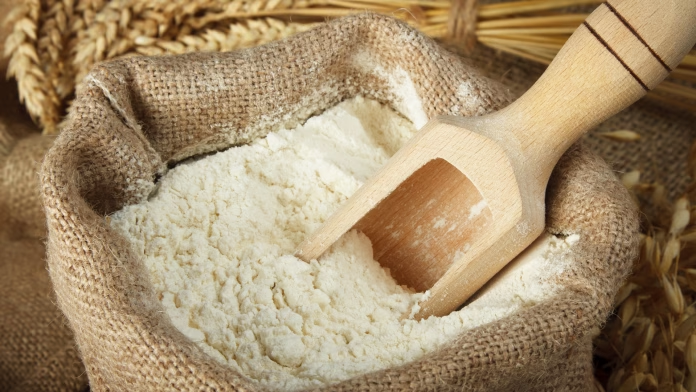Flour is a common ingredient used in many recipes, including bread, cakes, and pastries. However, it is essential to store flour properly to ensure that it lasts longer and remains fresh.
Here, we will discuss the best ways to store flour to extend its shelf life and prevent spoilage.
Why is proper storage important?
Flour is a perishable item, and if not stored correctly, it can go bad and become unusable. When flour is exposed to moisture, heat, or air, it can attract pests, such as insects or rodents. Additionally, flour can develop mold or bacteria, which can be harmful to human health if consumed.
By properly storing flour, you can extend its shelf life and ensure that it remains fresh and usable for an extended period.
What type of flour storage container should you use?
When it comes to storing flour, the container you use is just as important as the storage location. Airtight containers are the best option for storing flour, as they help to keep moisture and air out, preventing the flour from going bad.
There are several types of airtight containers that you can use to store flour, including glass jars, plastic containers, and metal containers. Glass jars are a popular choice, as they are non-reactive and do not absorb odors, which can impact the flavor of the flour. However, plastic and metal containers are also suitable options, as long as they are airtight and have a tight-fitting lid.
How to Store Flour So That It Lasts Longer
Store in a cool dry place:
One of the most important things to consider when storing flour is the storage location. Flour should be stored in a cool, dry place away from heat sources, such as ovens, stovetops, or direct sunlight. Exposure to heat can cause the flour to spoil, and moisture can cause it to clump or become moldy.
Ideally, flour should be stored in a pantry or a cupboard, away from the kitchen’s humid areas, such as the sink or the dishwasher. If you live in a particularly humid area, you may want to consider storing your flour in the refrigerator or freezer to extend its shelf life.
Freeze the flour:
If you are not planning to use your flour for an extended period, freezing it is an excellent way to extend its shelf life. Freezing flour can kill any insects or larvae that may be present and prevent mold growth. Additionally, freezing can help to maintain the flour’s freshness and prevent it from developing a rancid taste.
To freeze flour, transfer it to an airtight container or a resealable plastic bag, and place it in the freezer. Be sure to label the container or bag with the date of freezing to keep track of how long it has been frozen.
When you are ready to use the frozen flour, remove it from the freezer and allow it to come to room temperature before using it. Alternatively, you can use frozen flour directly in recipes that require baking, such as bread or cakes.
Use oxygen absorbers:
Oxygen absorbers are small packets that can be placed in flour containers to remove oxygen from the air, preventing mold growth and spoilage. Oxygen absorbers are typically made from iron powder and salt, and they work by absorbing oxygen from the surrounding air.
To use oxygen absorbers, place them in an airtight container with the flour and seal the container tightly. Be sure to use the appropriate size and number of oxygen absorbers for the container size and the amount of flour you are storing.
Don’t mix new and old flour:
If you have a small amount of flour left in a container, it can be tempting to add new flour to the container to save space. However, it is not recommended to mix old and new flour, as the older flour may have absorbed moisture and develop mold or bacteria. Mixing fresh flour with old flour can cause contamination and spoilage of the entire batch.
Instead, use up the remaining flour before opening a new bag or container of flour. If you must mix old and new flour, ensure that you use a clean container and transfer all the old flour to another container before adding the new flour.
Rotate your flour:
To ensure that your flour remains fresh and usable, it is essential to rotate it regularly. This means using the older flour first and replacing it with new flour as needed. This way, you can avoid using stale or expired flour, which can affect the texture and taste of your baked goods.
Label your flour:
Labeling your flour is an important step to ensure that you can keep track of the flour’s age and prevent the use of expired or stale flour. Label the container or bag with the type of flour, the date of purchase, and the date of opening. If you freeze the flour, label the container or bag with the date of freezing.
Storing flour properly is essential to ensure that it remains fresh, safe to consume, and usable for an extended period. Using an airtight container, storing the flour in a cool, dry place, freezing the flour, using oxygen absorbers, avoiding mixing old and new flour, rotating your flour, and labeling your flour are all crucial steps to keep your flour fresh and prevent spoilage.
By following these simple tips, you can extend the shelf life of your flour and ensure that your baked goods taste fresh and delicious every time. Properly stored flour is a staple in every kitchen, and it is worth taking the time to store it correctly to avoid waste and save money in the long run.





